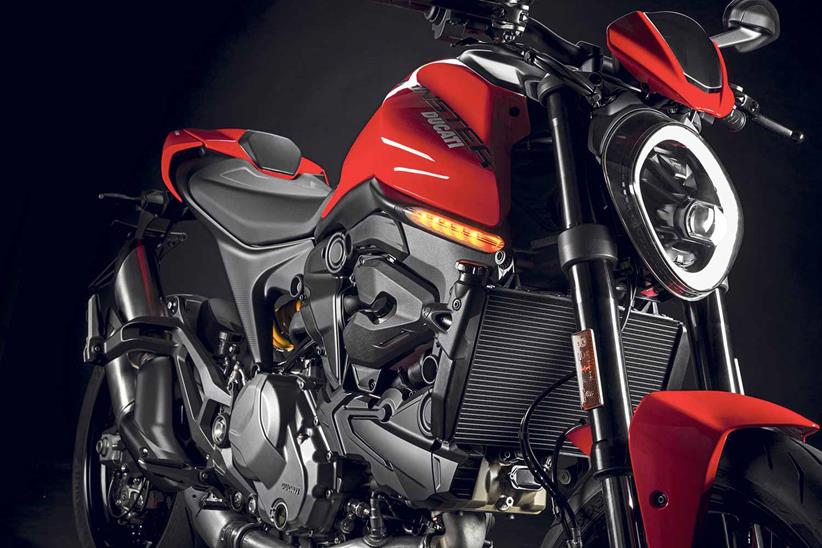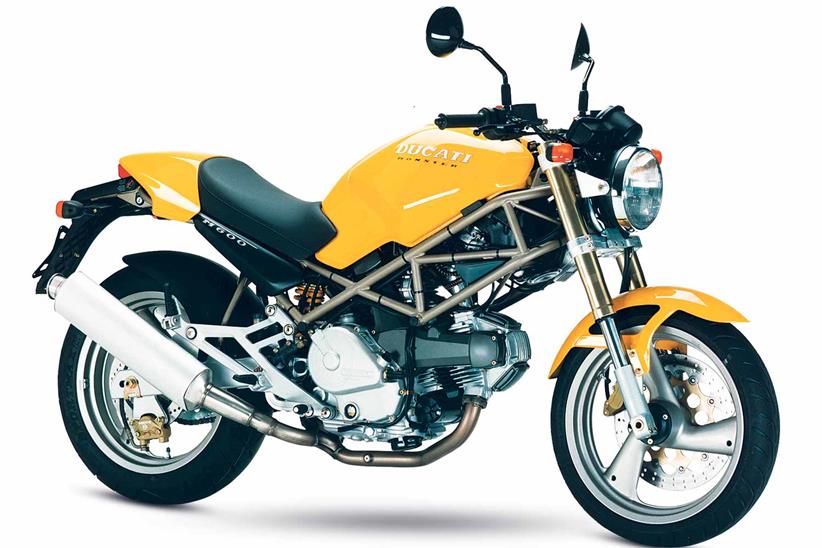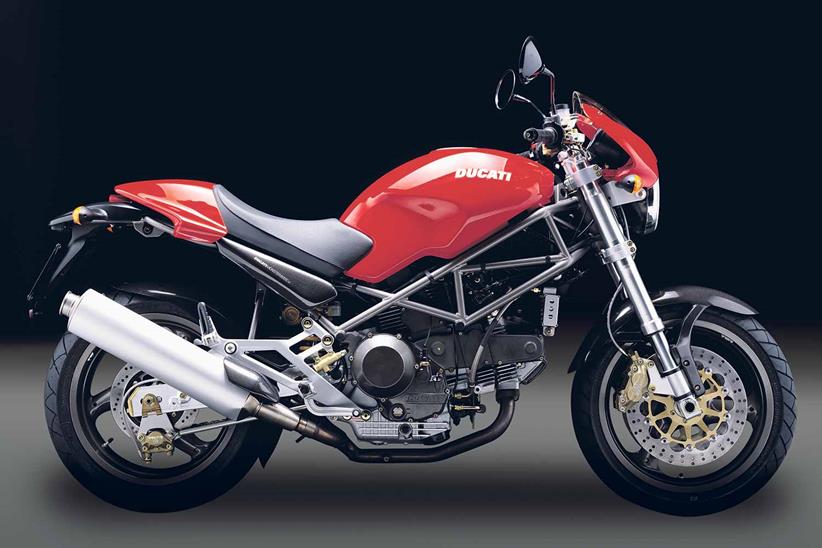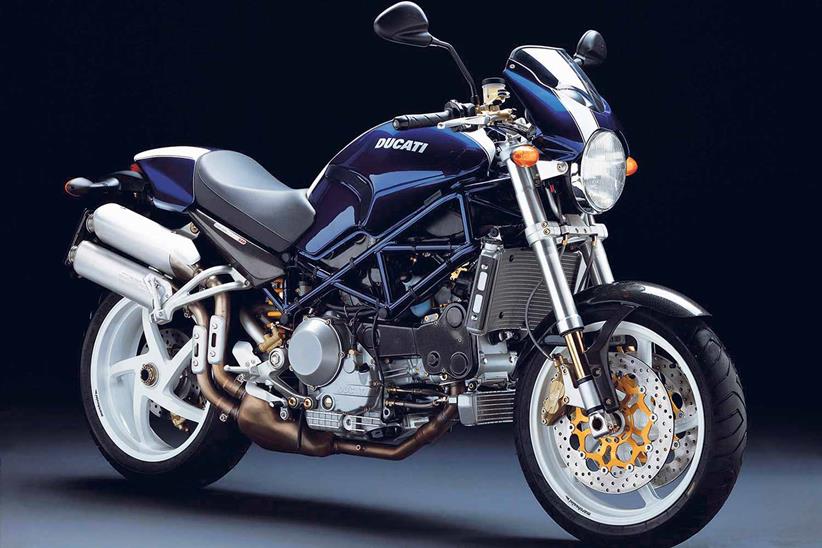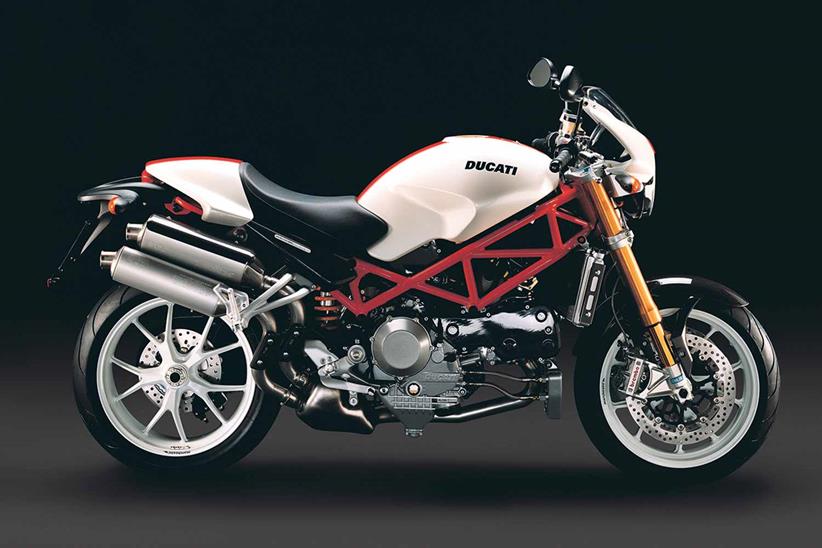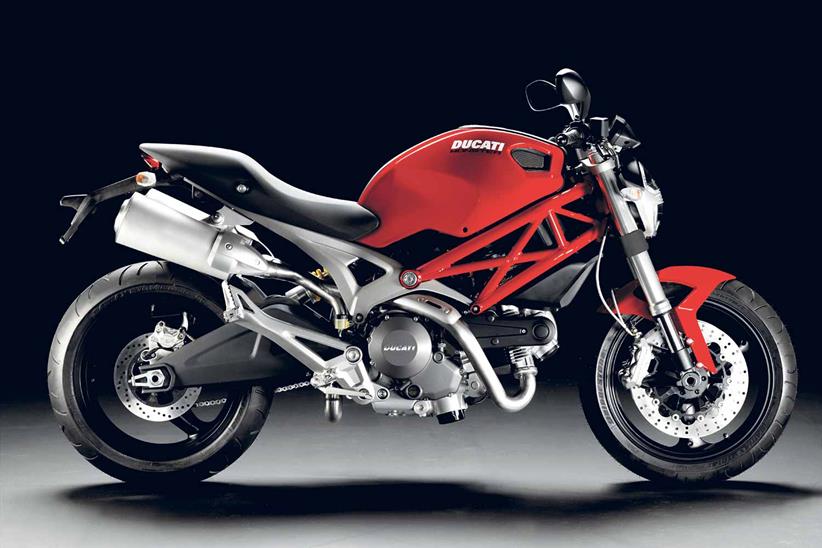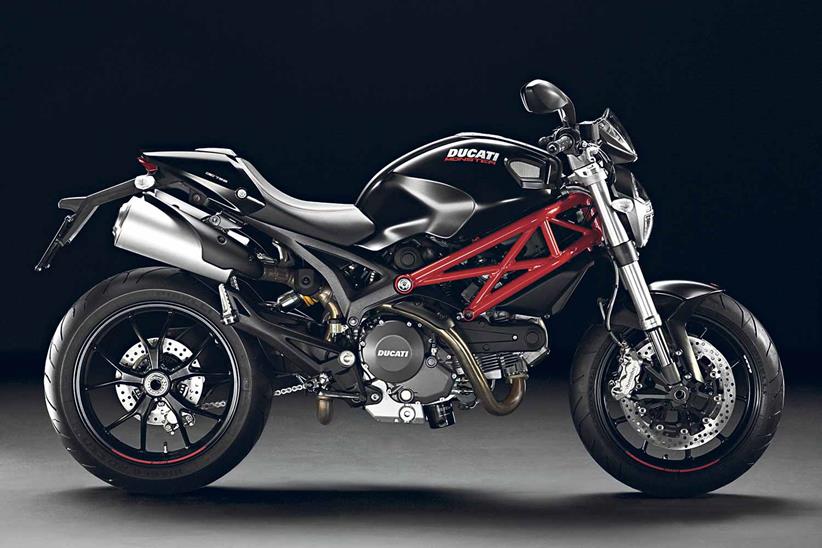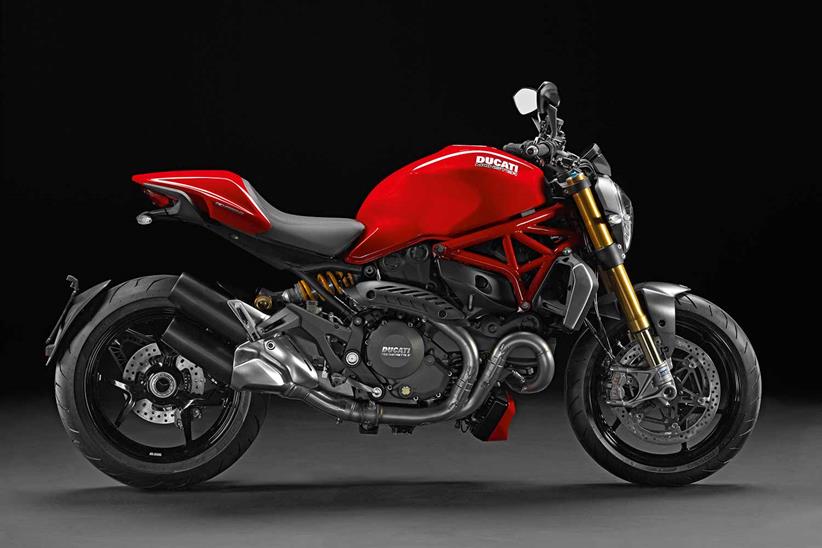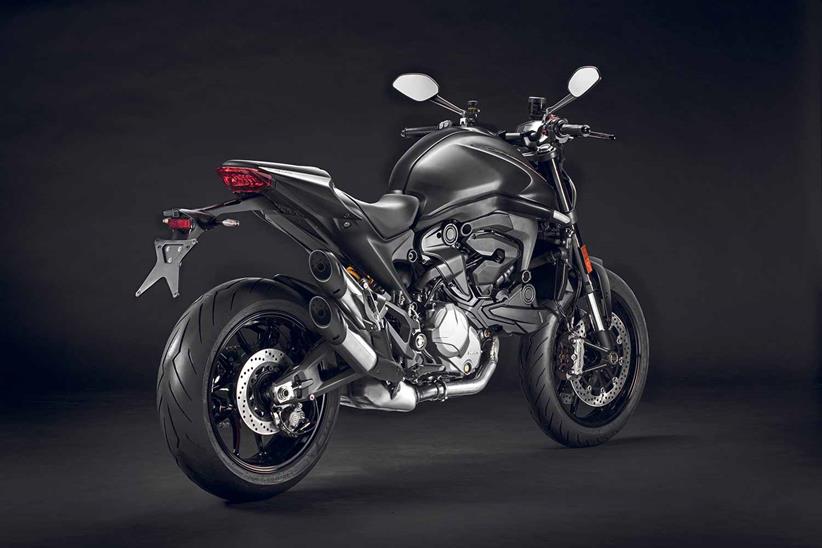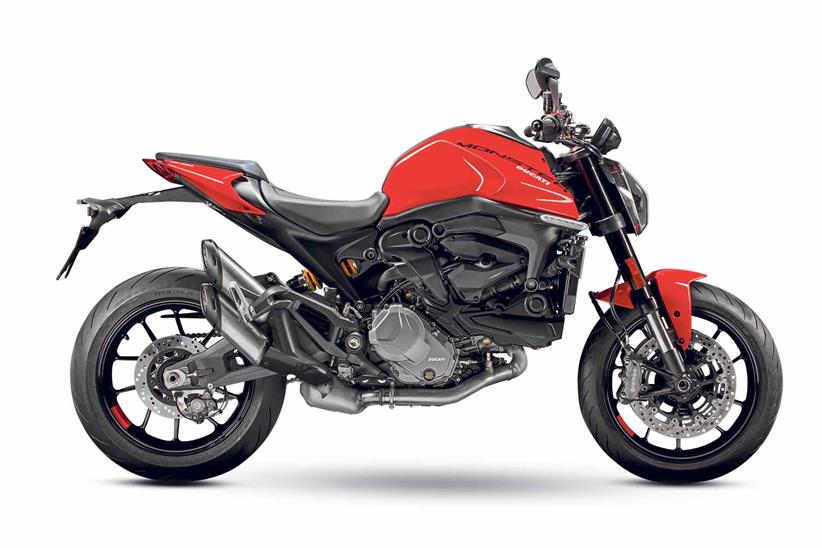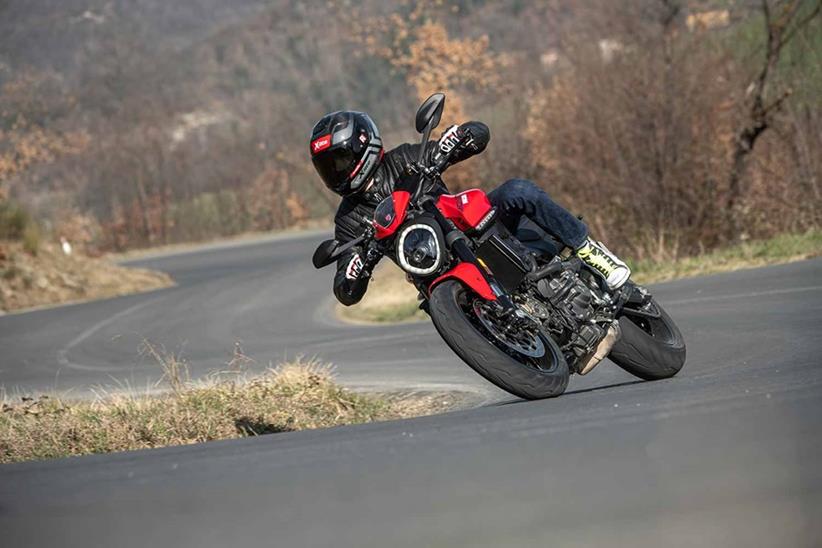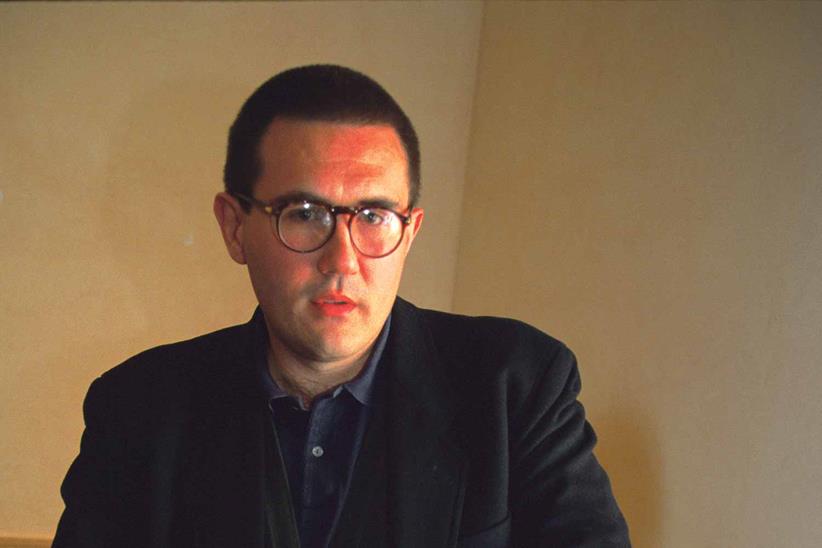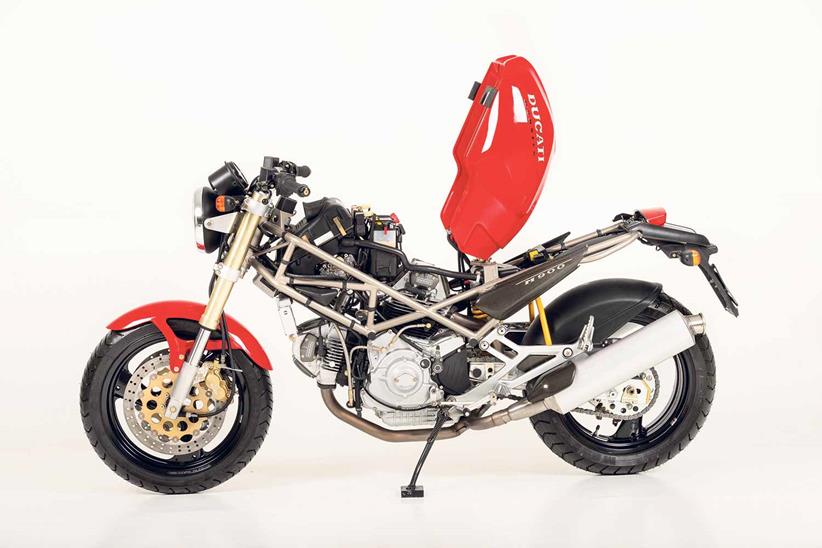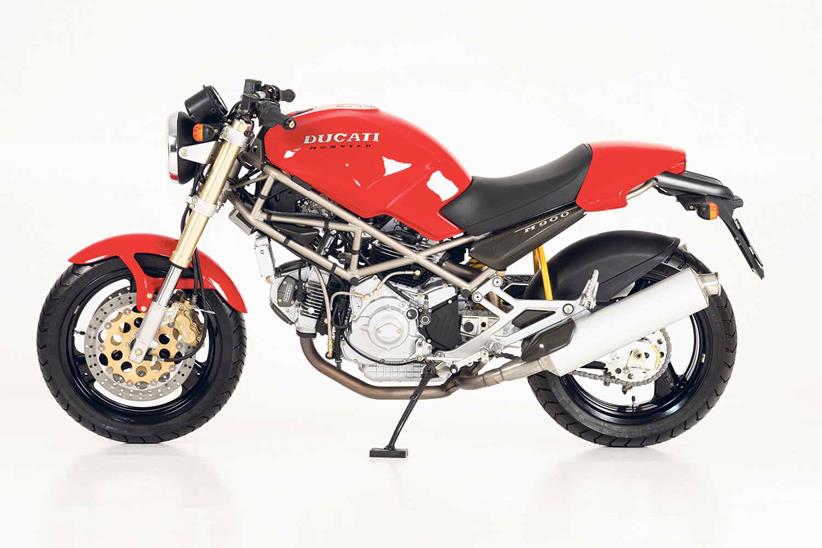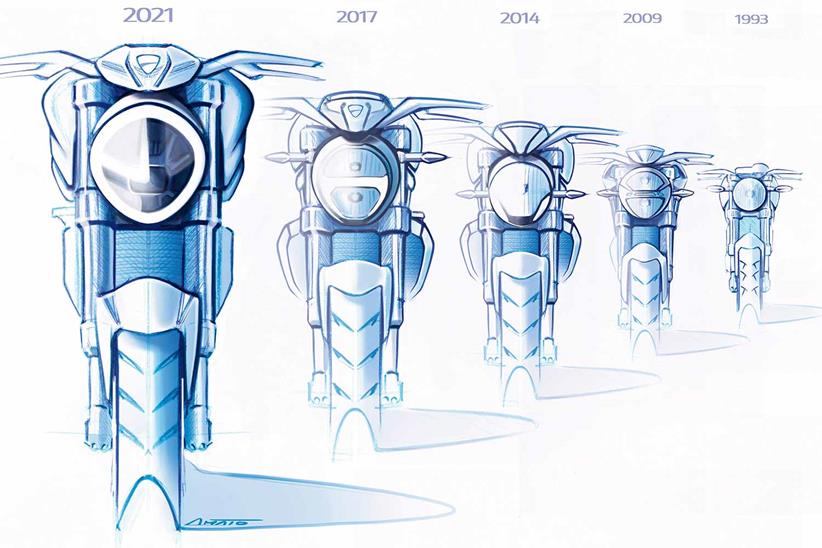Creating a Monster: Has the 2021 Ducati Monster turned its back on tradition?
We recently got the chance to ride the all-new 2021 Ducati Monster, almost three decades after the firm took the wraps off the original prototype at the 1992 Cologne Motor Show.
Entering production the following year, the original Monster M900 went on to become the bike that saved Ducati and also the model that defined a whole new motorcycle genre. The M900’s significance cannot be overstated.
Related articles on MCN
Although the subsequent 916 in 1994 grabbed more headlines, dominated World Superbike racing and became Ducati’s ‘poster bike’, it was the Monster and its spin-offs whose huge popularity – and profitability – saved Ducati from financial collapse. From 1993 to 2000 the Monster accounted for an incredible 42% of Ducati sales. To date, more than 350,000 Monsters of all types have been sold. On top of that the Monster has a claim to being the first factory super naked. No wonder this latest, fourth generation successor is so important.
![]()
The broad story of the original’s creation, as the pet project of Cagiva (Ducati’s then parent company) designer Miguel Angel Galluzzi, built out of Ducati’s ‘parts bin’ and only belatedly brought to market, has been told often. But 30 years and 38 models on, with the launch of the first Monster without both the original’s signature trellis frame and air-cooled V-twin, it’s worth telling once more. After all, without the creation of the Monster, Ducati might have ceased to exist. But without its trellis frame and air-cooled V-twin, will the new bike have enough Monster ‘DNA’ to live up to the original?
Naked ambition
![]()
Argentine-born designer Galluzzi became hooked on bikes as a boy, grew up in California and graduated in transportation design from Pasadena in 1986. With more car than bike opportunities, he first worked for Opel in Germany before joining Honda’s nearby car studio and in 1988 moved with it to Milan.
It was here, in a late 1980s era when motorcycling was dominated by fully enclosed superbikes such as Honda’s CBR1000F, that Galluzzi’s germ of genius for an alternative ‘all you need is a seat, tank, engine, two wheels and bars’ bike took hold.
“I got a [Japanese] Biker Station magazine and they used to do these side views of their test bikes without the bodywork,” Galluzzi recalled recently. “One picture was of the 851, the first generation, naked. We had a new colour photo copier, I made an A3 copy and then did a drawing on top.”
![]()
Later that year Galluzzi joined Cagiva… “That sketch stayed with me, and I remember having the interview with Castiglioni [Claudio, boss of Cagiva]. We talked for around three or four hours and I said: ‘This is the kind of bike we should be doing’. He replied ‘Yeah, maybe one day, maybe…’.
It wasn’t until the summer of 1991 that day came. “I had nothing to do and asked my boss ‘Can I go to Ducati and get some parts and put a bike together?’ And they let me – I think it was because they were trying to get rid of me because I was causing too much trouble – they said ‘OK, go, go, go…’”
The prototype bike Galluzzi then built is the heart of Monster legend. Comprising a 900SS air-cooled engine in an 888 superbike trellis frame with a 750SS front it was his original sketch made metal – and so unlike anything then available even Ducati failed to immediately see its potential, leaving the project to gather dust in a corner.
![]()
“At that time Ducati were not interested in naked motorcycles,” Galluzzi remembers, wryly. “So, after six months, I convinced Castiglioni to bring the bike into a big meeting with importers and at that meeting, the importer from France got out of his chair, got his cheque book out, and said ‘Claudio, I want 1200 of those…’ Everyone was like ‘Wow!’ And from that moment on the bike went into production.”
A less scary Monster
A more refined version was unveiled at the Cologne Show in September 1992 called the ‘M900 Il Mostro’ (although this changed to the English translation soon after). It went into production immediately after (a relatively easy task as all components bar the tank, seat and side-panels were ‘off-the-shelf’) and the rest, as they say, is history.
“At first everybody was going ‘What’s that?’,” says Galluzzi. “Then it became the success it became because it was a very simple way to enjoy riding a motorcycle that was affordable, too.”
Landing in the UK the following spring the now ‘Monster’ was an immediate hit. At £7500 it was ‘Japanese money’; its 73bhp, although unremarkable in 900SS sportster trim, was more than enough for a lightweight roadster; it looked great, was easy to ride and reasonably practical – especially around town.
That success triggered the launch 12 months later of a smaller, even more affordable stablemate – the M600 Monster. This version, although visually identical, used the 53bhp engine from the 600SS while a more basic spec (single front disc, no oil cooler) including cheaper suspension components, enabled a price of just £5000, making it a bigger hit still. Suddenly a stylish Ducati was not only affordable it was unintimidating to ride as well, so much so the 600 remained a best seller for years, further spin-offs including Dark and 750 versions were introduced and the Monster legend was well and truly established.
![]()
Evolution of the species
Over the years since the Monster’s success has continued through a series of updates and model expansion. Fuel injected, enlarged and performance versions followed, some controversially using liquid-cooled engines. While even an all-new ‘second generation’ Monster in 2008 conspicuously retained its ‘signature’ trellis frame (albeit much reduced and now bolted to sizeable aluminium sections) and an air-cooled motor.
Instead, the first truly seismic change to the traditional Monster formula came with the ‘Third generation’ bikes from 2014. The first of these was the new liquid-cooled 1200, which replaced the air-cooled 1100 and used a detuned version of the Testastretta 11-degree V-twin already powering the then Multistrada and Diavel. A new liquid-cooled ‘Baby’ Monster, the 821, came the following year using the engine from the Hypermotard.
These new engines not only brought more efficient cooling and thus higher performance they also helped the Monster through ever-more stringent EU emissions and noise regulations which by then were sounding the death knell for air-cooled motors.
A further plus point was that their ride-by-wire and ECU systems also brought with them increasingly sophisticated electronic rider aids of the type Ducati introduced on the 1200 Multistrada making these latest Monsters, if not as simple and pure as the ’93 original, then certainly far more potent and sophisticated. The 2014 Monster 1200R, for example, with a full 160bhp, Öhlins suspension, top spec Brembo brakes, slick riding modes and more, not only had twice the power of the original M900, it was a true track weapon that was almost the match for a full-on superbike. Besides, for traditional Monster fans, it still retained that part-trellis frame.
![]()
Still a Monster?
Of course, that remaining link to the original Monster has now finally disappeared with Ducati’s brand new, liquid-cooled, aluminium framed 2021 version – or has it?
Although the air-cooling and trellis frame have gone, Ducati themselves say the recipe for the new Monster is exactly the same as that of the 1993 original, in having ‘a sporty engine, but perfect for road use, combined with a superbike-derived frame’. They may have a point.
This time round, of course, the engine is Ducati’s latest, smaller, 937cc Testastretta producing a very ‘street’ 111bhp. The chassis, meanwhile, rather than being a trellis for trellis’ sake, is, as with the original M900, from Ducati’s latest superbike – in this case an aluminium ‘Front Frame Concept’ as per the Panigale V4, so again helping the new Monster be among the lightest bikes in its class. The original M900 was 185kg wet. This latest version, despite its liquid-cooling, catalysers, electronics and more, is just 188kg.
Look even closer and there’s plenty of other classic Monster signatures, too, from the round headlight (albeit a fancy LED), sharp and sporty tail and hunched fuel tank (for some reason, Ducati call it ‘Bison back’). It’s even available in traditional Monster red. A ‘+’ version, meanwhile, comes with a classic Monster seat hump and bikini fairing.
Yes, the newcomer may have been more evocative still had it come with a gold frame but as a riding proposition, with that 111bhp, stumpy geometry, light weight and aggressive riding position, it’s as much of a Monster as ever. If only it had a £7500 price tag as well.
A history of the Ducati Monster
1993 Original M900 Monster launched, combining 888 steel trellis frame with air-cooled 904cc engine from the 900SS.
1994 Ducati M600 Monster. Original small capacity Monster uses 584cc 600SS motor, just a single front disc and proves a massive hit.
![]()
1998 Ducati M900 S Monster. The first ‘high-spec’ model with uprated suspension, carbon side panels and mudguards and small fly screen.
2000 Ducati M900ie Monster. First fuel-injected Monster also gains extra power, digital dash and uprated forks.
2001 Ducati Monster S4 ‘Performance’ Monster, controversially using liquid-cooled but retuned 916 motor.
2003 Ducati Monster S4R. First Monster with single-sided swingarm. S4 is uprated with new chassis and 113bhp 996 engine to compete with likes of new Aprilia Tuono.
![]()
2007 Ducati Monster S4RS. Hottest Monster yet gets Öhlins suspension, lightweight wheels and the 998 Testastretta engine.
2008 Ducati Monster 696 – the ‘second generation’ Monster arrives. All-new chassis, styling, underseat pipes, LCD dash and more. Monster 1100 with single-sided swingarm arrives in 2009.
![]()
2011 Ducati Monster 1100 Evo. Electronics arrive. Traction control and ABS added.
2013 Anniversary models: to celebrate 20 years of the Monster. Ducati releases bikes with the same gold frame and red paint as the original 1993 900.
2014 Ducati Monster 1200/S arrives and water-cooling takes over. Third generation Monster loses air-cooled engine in favour of liquid-cooled Testastretta 11-degree motor, but retains a part-trellis frame. New ‘baby’ 821 follows in 2015.
![]()
2016 Ducati Monster 1200R. The most powerful yet. With its full-bore Testastretta engine, Öhlins, Marchesinis and more, the most potent Monster so far has the spec to match.
2017 Ducati Monster 797. New entry-level version sees reintroduction of air-cooling – but the model is short lived. 2021 ushers in a new era that will keep the Monster alive for years to come.
2021 Ducati Monster becomes the first without a trellis frame. It combines a lightweight Panigale V4 aluminium frame with liquid-cooled 937cc engine from the current Ducati SuperSport…
⏱️ Join @Neevesy33 for #60secondswith the 2021 Ducati SuperSport 950 S. pic.twitter.com/dAYEtbzVQp
— Motor Cycle News (@MCNnews) March 30, 2021
